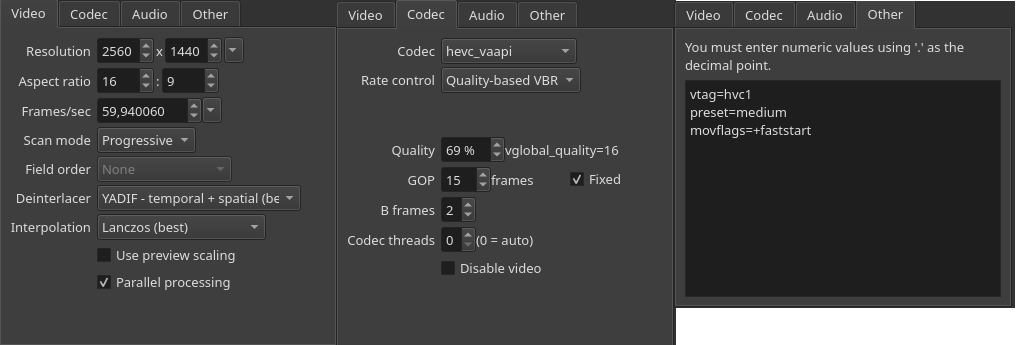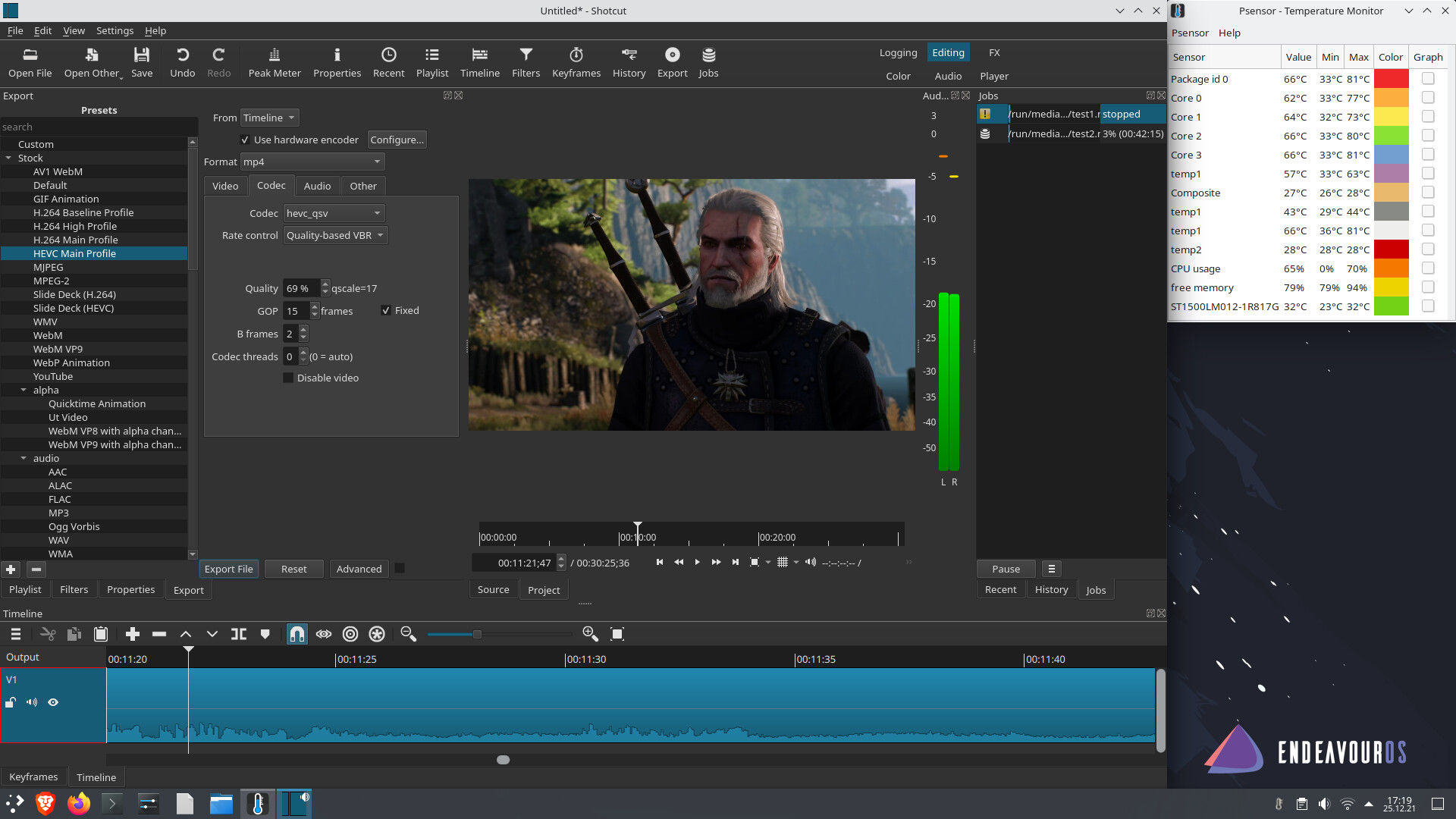I recently switched from Manjaro to EOS on my main machine. It’s a laptop with a i5-10210U and I often use this computer to encode videos. Since the CPU is much too slow for HEVC CPU encoding I rely on HW encoding, using the GPU of the Intel chip.
I use Shotcut and these are the settings I always used for encoding:

On Manjaro, using those settings, I got export times of ~1.25. What I mean is that it took about 1h 15min to export 1h of video.
Strangely, now on EOS, using the same settings, export time is much longer:

As you can see it’s now about 55 minutes for a 30 minute test video, so about 1h50min for a 1h video. You can also see that the CPU usage is rather low, but that was also the case on Manjaro.
Since this is far from ideal, I looked through the settings and found another HW encoder besides hevc_vaapi. It’s called hevc_qsv and I remember that I tried it on Manjaro only once but never used it because it was slower while using more CPU.
Now, on EOS, this encoder is actually the faster one:

This is about 43 minutes for the test video, so about 1h26min for a 1 hour video. Still slower than hevc_vaapi was on Manjaro and it also uses around twice as much CPU.
OK, I hope you can see, why I’m confused. Why was hevc_vaapi so much faster on Manjaro? Why was hevc_qsv slower on Manjaro but is actually faster on EOS? And, another thing I don’t really get, what’s even the difference between hevc_vaapi and hevc_qsv? I always thought that VAAPI is just an API to use HW encoding, so shouldn’t those options be the same?
Can anybody shed some light on this all?

